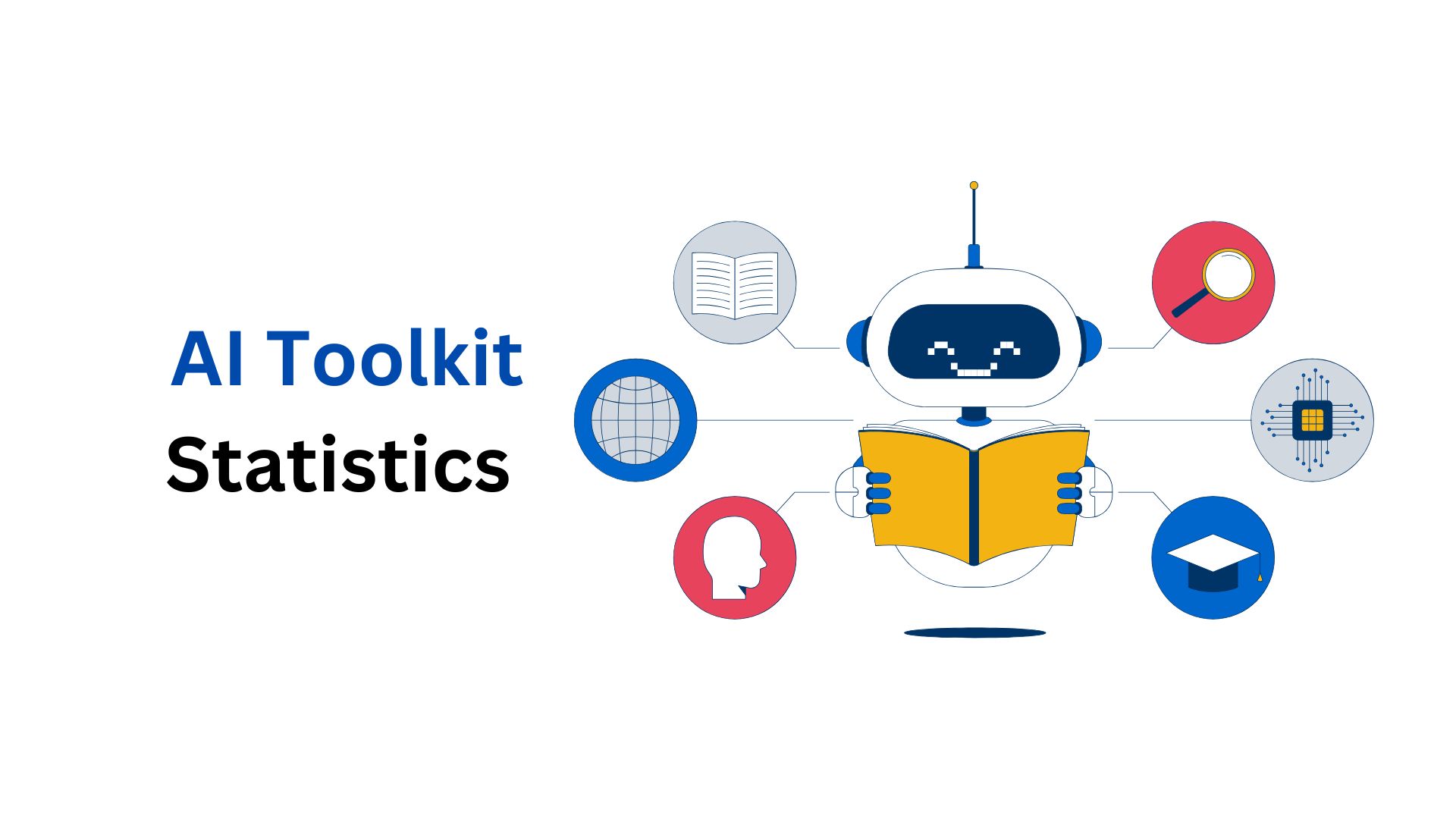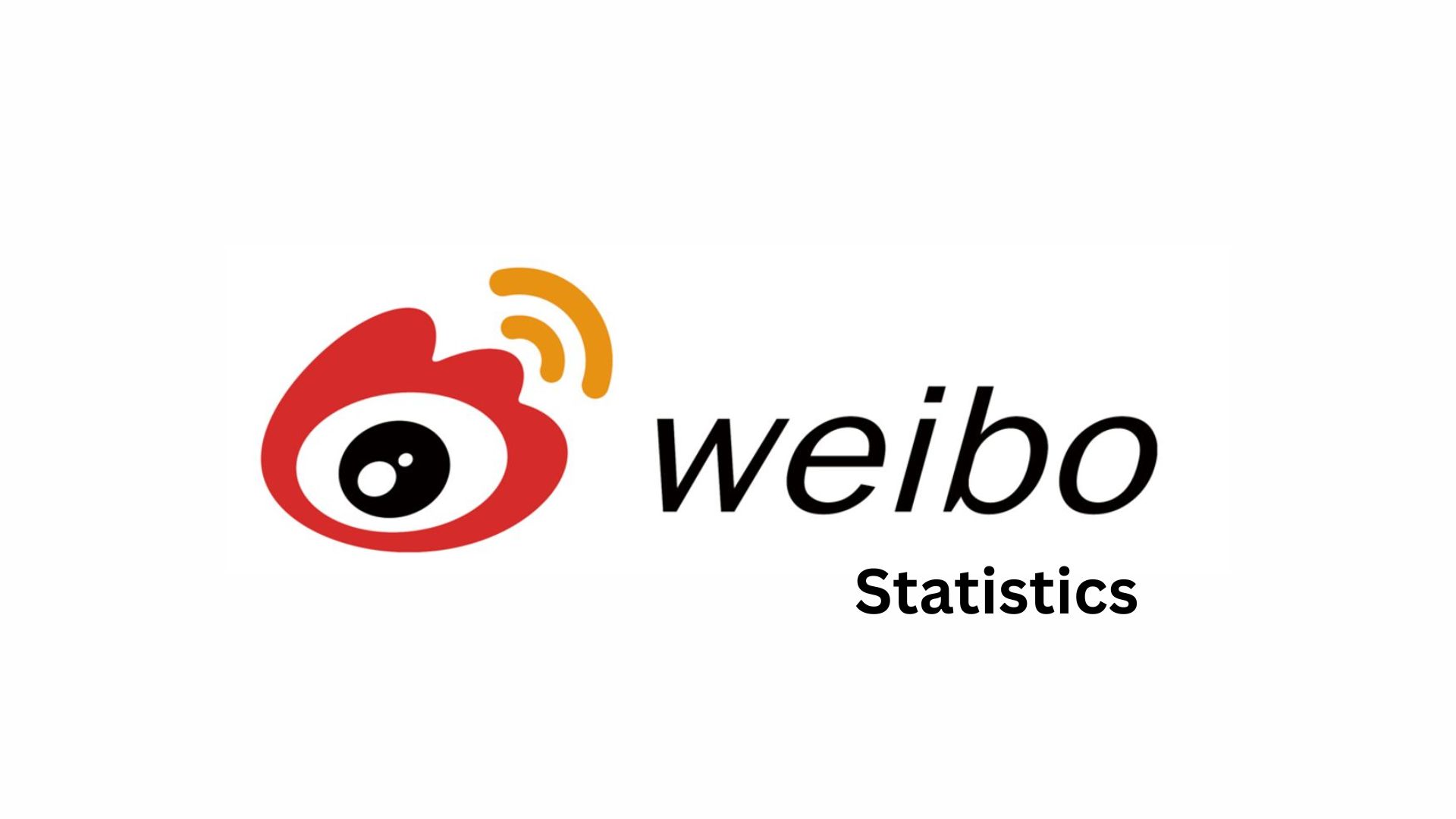Microsoft Azure Statistics By Market Share, Subscribers And Facts (2025)
Updated · Apr 29, 2025
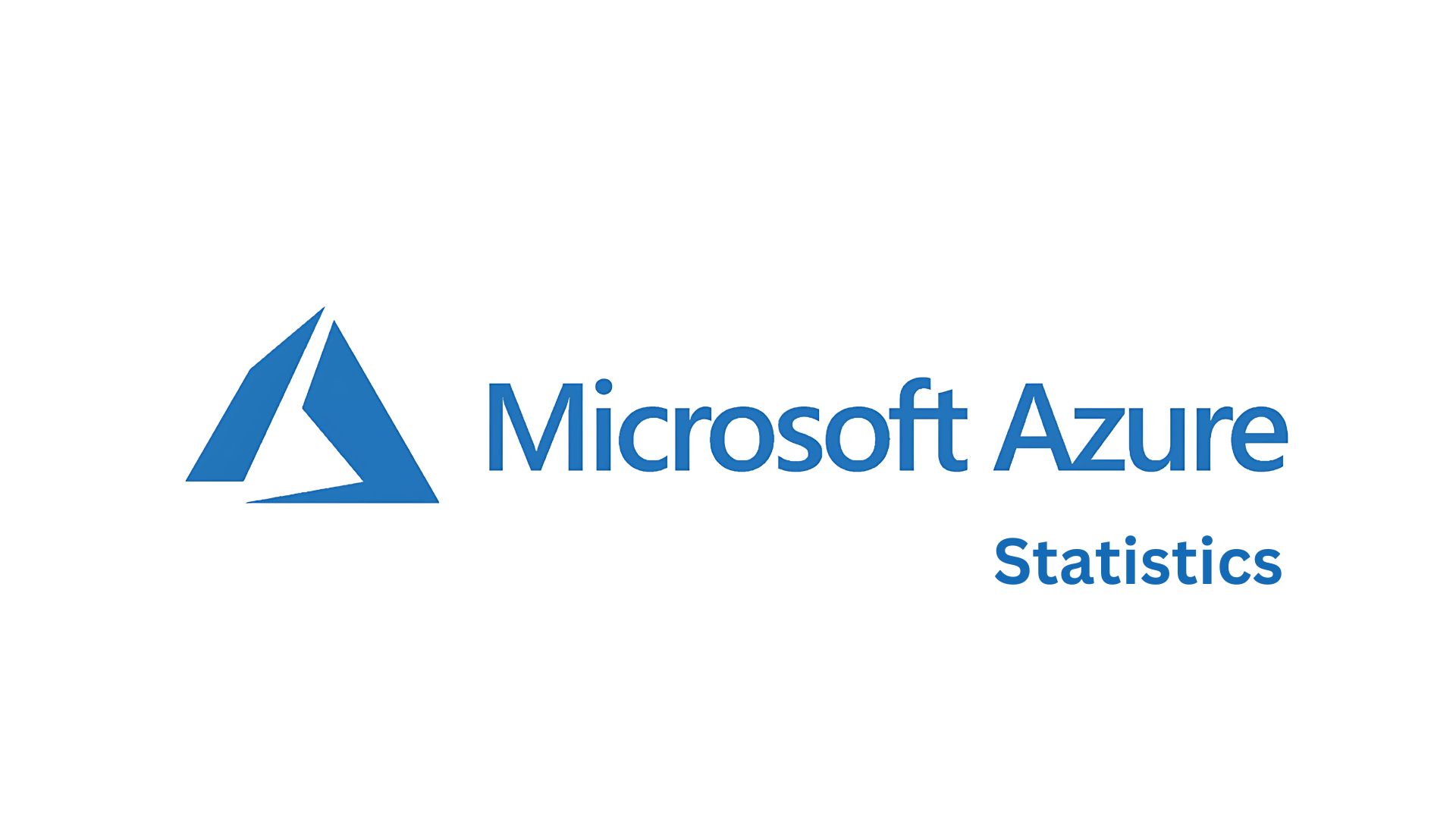
Table of Contents
- Introduction
- Editor’s Choice
- Key Facts
- Azure Customers By Region
- Growth Of Microsoft Azure Customer Base
- Microsoft Azure Customer Base By Spending
- Number Of Azure Buyers In Key Industries
- Microsoft Azure Buyers By Cloud Leaders Vs Hybrid
- Microsoft Azure Market Share
- Microsoft Azure Top Subscribers
- AI Integration And Impact
- Capital Expenditures And Infrastructure Expansion
- Conclusion
Introduction
Microsoft Azure Statistics: Microsoft Azure is a leading cloud computing platform, contributing significantly to Microsoft’s Intelligent Cloud segment, which reported $24.1 billion in revenue during Q3 2024, reflecting a 20% year-over-year increase. Azure holds a 20% share of the global cloud infrastructure market, positioning it as the second-largest provider after Amazon Web Services (AWS), which commands a 31% share. The platform serves approximately 486,738 organizations worldwide, with 85% of Fortune 500 companies utilizing its services.
Microsoft has invested over $108 billion in expanding its cloud infrastructure, including the development of more than 60 AI data centers globally. This strategic investment has facilitated the integration of advanced technologies such as machine learning and AI into Azure’s offerings.
This article will discuss in detail the Microsoft Azure statistics, focusing on important indicators and metrics such as market shares, revenue figures, and strategic initiatives.
Editor’s Choice
- Microsoft Azure had a total of 347,924 customers globally in 2024, with 132,012 from North America, 135,187 from EMEA, 58,308 from Asia-Pacific, and 22,290 from Latin America.
- Azure experienced a customer swell in 2024, with startups (1-50 employees) as the top clientele, increasing by 23% from 157,000 customers to 193,000.
- In 2023, small businesses contributed 5.7% to Azure’s revenue growth, mid-market customers contributed 3.7%, and enterprise customers contributed 2.4%.
- About 78% of Azure customers spend less than USD 1,000 per month, 16% spend over USD 1,000, 5% spend over USD 5,000, 0.8% spend over USD 20,000, and 0.1% spend over USD 100,000 monthly.
- The Internet industry led high-value consumption, with 64 firms each spending over USD 100,000 per month on Azure, more than all other industries combined.
- Among enterprise customers (1,000+ employees), 86% use a hybrid cloud model, while only 14% are fully cloud-first.
- Among small companies (<10 employees), 79% operate cloud-only without a hybrid infrastructure.
- Top Azure customers by annual spending included Verizon (USD 79.9 million), MSI Computer (USD 78 million), LG Electronics (USD 76.7 million), LinkedIn (USD 41.2 million), Adobe (USD 39.9 million), and Intel (USD 38.5 million).
- The Intelligent Cloud segment, which includes Azure, recorded over USD 60 billion in revenues in 2021, rising from about USD 50 billion in 2020.
- AI became a stronger revenue engine for Azure in 2024, with its share increasing to 9% in Q4 results, up from 7% earlier, driven by deeper integration with OpenAI and Copilot tools.
- Microsoft increased its capital expenditure to USD 55.7 billion in FY2024, up 75% year-over-year, with USD 19 billion spent in Q4 to expand its data center and AI infrastructure.
- Azure was still significantly behind AWS, which reported USD 16.11 billion in cloud services revenue in Q3 2021.
Key Facts
- Azure was launched by Microsoft in February 2010 as a cloud-computing platform specialising in its artificial intelligence (AI), keeping with the cloud-exposed service scenario of private and public cloud.
- Azure is IaaS, PaaS, and SaaS, with services like AI, machine learning, virtual computing, storage, networking, and analytics.
- Azure has now been undergoing steady growth worldwide to fulfil global organisations’ longstanding and rising demand for its offerings.
- One of the major breakthroughs in Azure’s journey has been its partnership with OpenAI to provide advanced AI to as many humans as possible.
- As of 2025, Azure boasts over 5,379 services and products pertaining to AI and ML meant to cater to companies of any size across different industries such as healthcare, finance, government, and retail.
- Approximately 38% of organisations from around the world use Microsoft Azure for their cloud computing needs.
- Some of the core offerings of Azure include data management, media services, AI and ML tools, developer accelerators, and IoT applications.
- Microsoft continues to expand the Azure portfolio with innovations such as the Phi-3 models, which are next-generation small language models co-developed with OpenAI.
- The partnership between Microsoft Azure and OpenAI will change AI and cloud computing through the rapid development and deployment of advanced models.
- Microsoft Azure is one of the leading three cloud providers in the worldwide market, along with Amazon Web Services (AWS) and Google Cloud.
- Microsoft, a later entrant into the cloud market, nevertheless gained momentum due to its strength in enterprise IT and robust software foundation.
- The productive integration of Azure with Microsoft’s products, particularly Office 365, laid the foundation for the success of Software as a Service, further enhanced by AI features such as Copilot within Microsoft 365.
- These developments have further strengthened Microsoft’s global leadership in the PC operating system market.
Azure Customers By Region
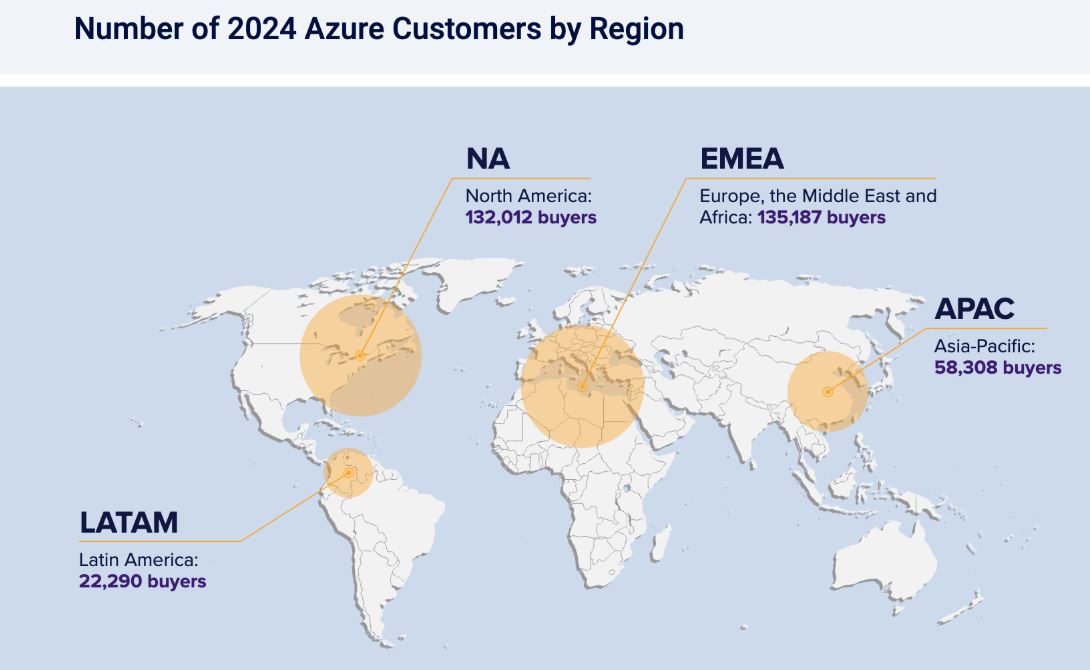
(Source: hginsights.com)
- Microsoft Azure is set to have a broad geographical diversity among its clientele in 2024. The North American region is one of the largest in terms of the number of customers within Microsoft Azure’s ecosystem.
- Of the countries counted in the Latin American region, there are 22,290 organisations making use of Azure technology.
- In total, during the year, 132,012 buyer transactions were recorded under Azure in North America. It was the EMEA region, Europe, the Middle East, and Africa, that boasted the greatest number of Azure users: in total, all 135,187 customers were counted as involved with Windows.
- Azure in the Asia-Pacific (APAC) region had 58308 buyers. Not only that, but Microsoft Azure statistics figures showed Azure’s extensive usage recognition and strong foothold across developed and emerging markets.
Growth Of Microsoft Azure Customer Base
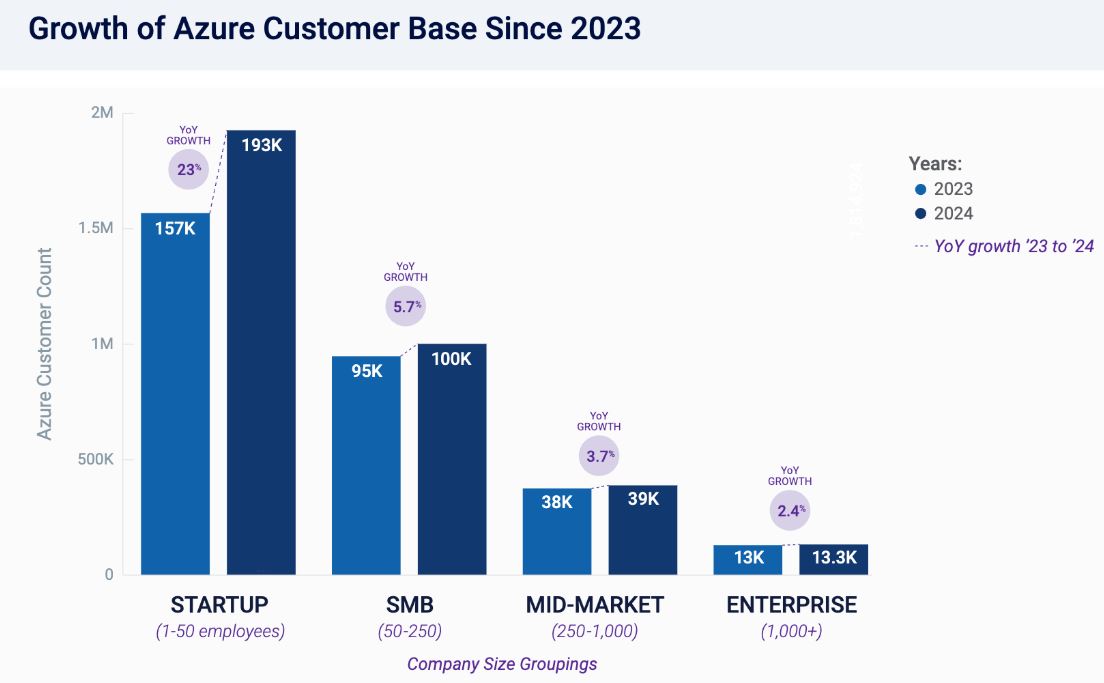
(Source: hginsights.com)
- Since 2023, Microsoft Azure has been increasingly expanded by all types of customers. For startups and entities that have less than 50 employees, this was largely up as high as 157,000 in customer growth in 2023 to as much as 193,000 in 2024, or a very decent high of 23% following growth.
- Certainly, the trend is indicative of small businesses that tend to prefer the cloud services Azure provides, possibly due to budgetary flexibility and responsive solutions.
- Small and medium businesses, which comprise businesses employing from 50 to 250, had a marginal growth of Azure customers, moving from 95,000 to 100,000, a percentage rise of 5.7%. That’s a limited growth, meaning it’s consistent, since SMEs are still migrating towards the cloud for better operational efficiency.
- There was a slight increase in customers from 38,000 to 39,400, out of a mid-market enterprise segment that includes the following: shares of businesses with employee sizes between 250; 1,000-therefore, the growth was approximately 3.7%.
- Microsoft Azure statistics indicate slow but steady-moving digital change among mid-sized organisations.
- For enterprises with over 1,000 employees, Azure has grown from 13,000 to 13,300 users or by 2.4%, the lowest percentage increase across all markets.
- But that also shows that increasingly even the largest organisations are continuously broadening their scope of use of Azure services, though at a more casual pace compared to the other segments, due to their already high levels of adoption.
Microsoft Azure Customer Base By Spending
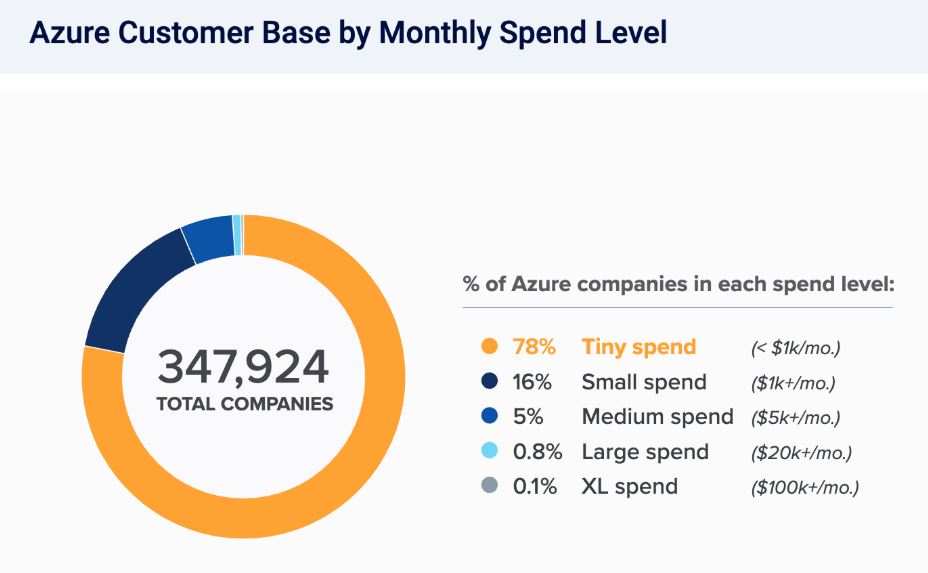
(Source: hginsights.com)
- Microsoft Azure statistics show that from a total of 347,924 Microsoft Azure companies, the majority fall below low spending categories.
- A whopping 78% of firms reported monthly spends below US$1,000, meaning that a huge segment of Azure’s customer base comprises startups, small businesses, or organisations using just basic cloud services.
- Another 16% of companies also fall into the small spend category, spending over US$1,000 in a month. This group probably makes up small-to-mid-sized businesses or those using a wider variety of Azure services.
- About 5% of companies are in the medium spend category, from US$5,000 a month up. These would likely be mid-size companies with a more intricate infrastructure or usually a larger number of users.
- Only 0.8% of companies are now in the large-spending group, spending beyond US$20,000 per month, and these are often rather established enterprises conducting broad operations on Azure.
- Continuing up, an exceedingly grand and privileged category of only 0.1% of Azure customers falls into the XL spends category, US$100,000/month and beyond. These are usually big corporations or tech companies with massive cloud infrastructure needs.
- This distribution shows a presence of big spending customers on Azure, while most of its customers are, in fact, smaller spenders.
Number Of Azure Buyers In Key Industries
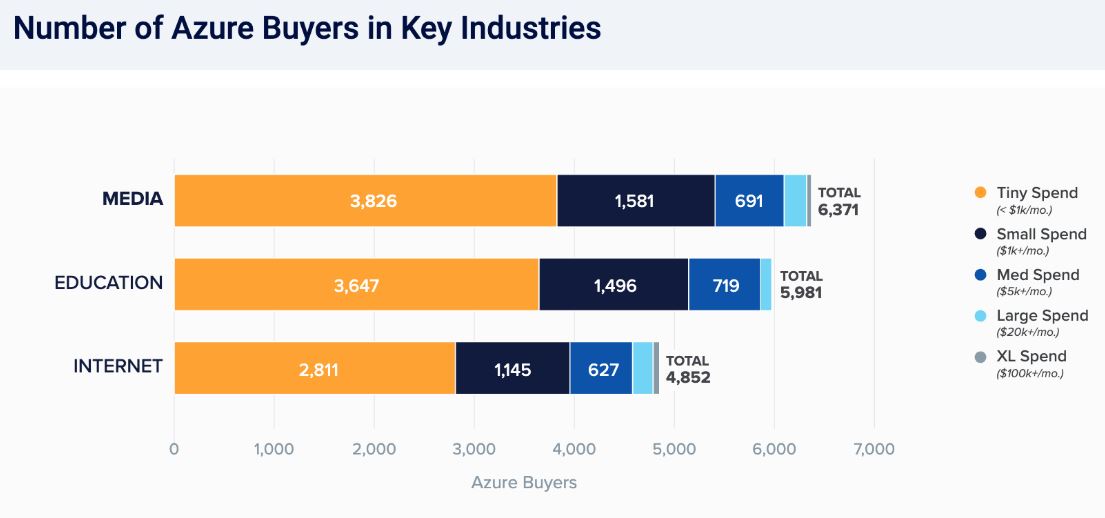
(Source: hginsights.com)
- The data set shows that the Internet sector, while not the largest in terms of total number of Azure customers, stands at the top when it comes to high spenders.
- A total of 64 companies in the Internet industry spend over US$100,000 monthly on Azure services.
- Microsoft Azure statistics indicate that companies in the Internet industry, from tech platforms to digital services or online infrastructure providers, are among the heaviest consumers of Azure resources.
- Their spending of hundreds of thousands of dollars monthly on Azure indicates that they rely heavily on Azure for resource-intensive operations, such as large-scale data processing, AI workloads, global content delivery, and hosting large-scale online platforms.
- It also represents the need of the sector for a cloud solution that is scalable, reliable, and robust, supported by Azure, to support applications that have equally high traffic and performance intensity.
Microsoft Azure Buyers By Cloud Leaders Vs Hybrid
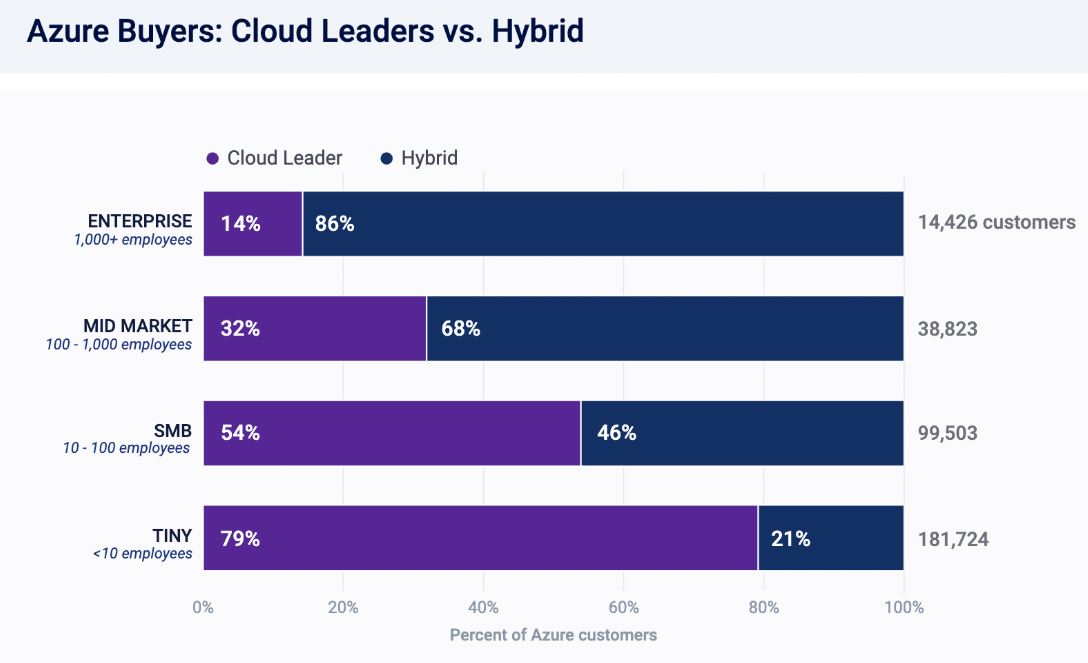
(Source: hginsights.com)
- DFD: the data demarking the profile of Azure customers by company size and more on the cloud deployment modes that they prefer, whether fully cloud-based (cloud leader) or hybrid (a mix of on-premises and cloud).
- Only 14% of enterprise-level organisations with more than 1,000 employees are primarily cloud-first. However, a significant 86% use a hybrid model.
- Microsoft Azure statistics suggest that large companies tend to hold on to some on-premises infrastructures but are connected to Azure for some workloads, possibly due to the legacy systems that are too complicated to move off or have possible regulatory issues.
- This segment has approximately 14,426 customers at the enterprise level. In the middle market companies, averaging from 100 to 1000 employees, 32% work as cloud leaders, with 68% leaning more toward hybrids.
- This middle ground demonstrates a trend of growing cloud comfort, with some resources still in-house. The population of Azure customers in this category is 38,823.
- For small to medium enterprises (SMEs), which have between 10 and 100 employees, 54% are purely cloud-based, while 46% use hybrid models. This further affirms the trend of smaller firms leaning more towards cloud adoption since it often turns out to be more cost-effective and scalable.
- The number of customers in this category is 99,503. The smallest category, i.e. companies with less than 10 employees, has shown the highest percentage in cloud-only adoption.
- A striking 79% of them are cloud leaders, while only 21% rely on hybrids.
- Microsoft Azure statistics clearly illustrate how micro businesses, especially in their first year of operations, are inclined to be dependent almost entirely on the Azure cloud due to the latter’s simplicity and smaller costs for platform setup. This group is composed of 181,724 customers.

(Reference: wpoven.com)
- According to Statista data on Microsoft Azure statistics, the revenues of Microsoft Azure have turned out to be a part of the more integrated intelligent cloud headline of the company, which is a mix of both private, public, and hybrid server products of cloud services.
- Well, this segment itself poured more than US$60 billion into the coffers of the income in 2021. In that, income from server products of Azure and continuous cloud services is included, along with the income produced from consulting and premium support services, all adding to Microsoft’s entire cloud portfolio.
- In the year 2020, Microsoft collected roughly US$50 billion from its cloud commercial services, clearly showing year-over-year escalation.
- However, it should be noticed that these numbers do not refer to a narrow interpretation that all these income numbers come from Azure, as other products besides Azure, such as Office 365 and Dynamics 365, also contribute significantly to the company’s total cloud income.
- Despite continuous growth, Azure doesn’t measure up to its main rival, Amazon Web Services (AWS).
- For instance, in the third quarter of 2021 alone, AWS generated a record US$16.11 billion in revenue within its cloud services, proving its dominance in the cloud market.
- Generally, this comparison indicates the expansion of Microsoft’s cloud business without obscuring the fact that AWS still greatly outranks it as a whole and in revenue.
Microsoft Azure Top Subscribers
- These are some of the major users of Microsoft Azure: top global companies signing agreements for annual high-value use.
- The first on the list is Verizon; its Azure bill amounts to US$79.9 million annually, indicative of a huge dependency on cloud infrastructure for telecommunications and digital services.
- MSI Computer follows closely with an estimated annual spending of US$78 million, potentially targeting requirements in the hardware and tech operations for high-performance computing and online storage.
- Second is a contract with LG Electronics for US$76.7 million per year, again underscoring the tight integration with Azure that the company has for its global smart devices and electronics.
- CenturyLink spends approximately US$61.9 million on an annual contract, while NTT America, a subsidiary of a major Japanese telecom group, utilises Azure for US$48.7 million.
- The Foundation Wikimedia, which operates Wikipedia and its related platforms, has a contract of US$42.6 million annually for Azure, suggesting that it depends heavily on cloud infrastructure for hosting and content delivery.
- LinkedIn Corp, owned by Microsoft, spends US$41.2 million annually in support of its gigantic social networking and professional data operations.
- There is also a US$40.5 million annual deal set up with News Corp, a media and publishing giant, while Adobe pays US$39.9 million, most likely for being tied to the cloud delivery of its creative software.
- Intel tops the list of ten companies with a last annual contract amounting to US$38.5 million, most likely to support advanced computing and AI workloads.
- Such Microsoft Azure statistics represent the extent to which enterprise clients expect to consume Azure for complex and large digital architecture.
AI Integration And Impact
- Artificial intelligence has become a major driving force for Azure in 2024.
- As reported by Microsoft Azure statistics, AI services accounted for approximately 9% of Azure’s revenue in Q4 2024, compared to 7% in the previous quarter.
- This change emphasises a steadily increasing demand for AI-based cloud solutions and places Microsoft’s strategic thrust in infusing AI capabilities into the entirety of its cloud offerings.
- Besides, the partnership with OpenAI unlimited approach as an enhancement of its Copilot tool, with many other ways Microsoft invests in AI, against the integration of its infrastructure has steadily improved the appeal of Azure to businesses hoping for advanced AI solutions.
Capital Expenditures And Infrastructure Expansion
- According to Microsoft Azure statistics, Microsoft has ramped up its capital spending for 2024 in light of rising demand for cloud and AI services.
- To ramp up its capital spending in FY2024, the company spent US$55.7 billion on capital expenditures, an increase of 75% from the previous year.
- Investments in new cloud services have been made in data centre expansion, AI infrastructure, and new cloud services.
- In Q4 of 2024 alone, US$19 billion was spent by Microsoft in capital expenditure, which represents a whopping 78% increase compared with the same quarter last year.
- This aggressive investment strategy underscores Microsoft’s commitment to maintaining Azure’s competitive edge in the rapidly evolving cloud market.
Conclusion
Microsoft Azure has once again sealed its position as a cloud service provider with strategic investments in AI, significant infrastructural expansion, and a sharp focus on enterprise solutions in 2024. Microsoft Azure statistics indicate that the integration into AI services has most certainly made a big difference, as those services hold 9% of Azure’s revenue in Q4 2024.
The full service offerings that Azure will benefit from as businesses lean toward hybrid cloud adoption put it on a positive path for continued growth in the future.
Sources
FAQ.
As for 2024, Microsoft Azure worldwide coverage comprises 347,924 customers with a large regional distribution: EMEA leads with 135,187 customers, followed by North America with 132,012, Asia-Pacific ranks third with 58,308, and Latin America with 22,290. This global spread signals a wide Azure interest in both developed and emerging markets.
Most Azure users are low spenders, with 78% of customers spending less than US$1,000 a month. Another 16% incur monthly expenses ranging from US$1,000 to US$5,000, whereas 0.8% spend about US$20,000 and 0.1% of customers spend a little over US$100,000 monthly. The distribution indicates Azure being a strong favourite among startups and SMBs, while also providing for the heavy infrastructure needs of big enterprises.
Between 2023 and 2024, Azure grew predominantly with startups, increasing its customer base from 157,000 to 193,000 by 23%. Growth of SMBs (50-250 employees)-5.7%, Mid-market (250-1,000 employees)-3.7%, and Large Enterprises (greater than 1,000 employees)- 2.4%. The numbers indicate the scalability and flexibility of Azure and further entice small and growing businesses.
AI is a key revenue lever for Azure, now worth 9% of revenue for Q4 2024 versus 7% earlier in the year. The growth is boosted through Microsoft products, with the AI tools Copilot and the OpenAI alliance. With huge investments in AI infrastructure, Azure remains the darling of enterprises looking for heavy AI solutions on the cloud.
Capital expenditures in FY2024 increased by 75% year-over-year to US$55.7 billion, with US$19 billion spent in Q4 alone. This expenditure aimed to enhance the capacity of data centres and AI infrastructure to meet demand. Such a strategy shows just how committed Microsoft is to maintaining the competitiveness and scalability of Azure in a fast-changing cloud marketplace.

Maitrayee Dey has a background in Electrical Engineering and has worked in various technical roles before transitioning to writing. Specializing in technology and Artificial Intelligence, she has served as an Academic Research Analyst and Freelance Writer, particularly focusing on education and healthcare in Australia. Maitrayee's lifelong passions for writing and painting led her to pursue a full-time writing career. She is also the creator of a cooking YouTube channel, where she shares her culinary adventures. At Smartphone Thoughts, Maitrayee brings her expertise in technology to provide in-depth smartphone reviews and app-related statistics, making complex topics easy to understand for all readers.

